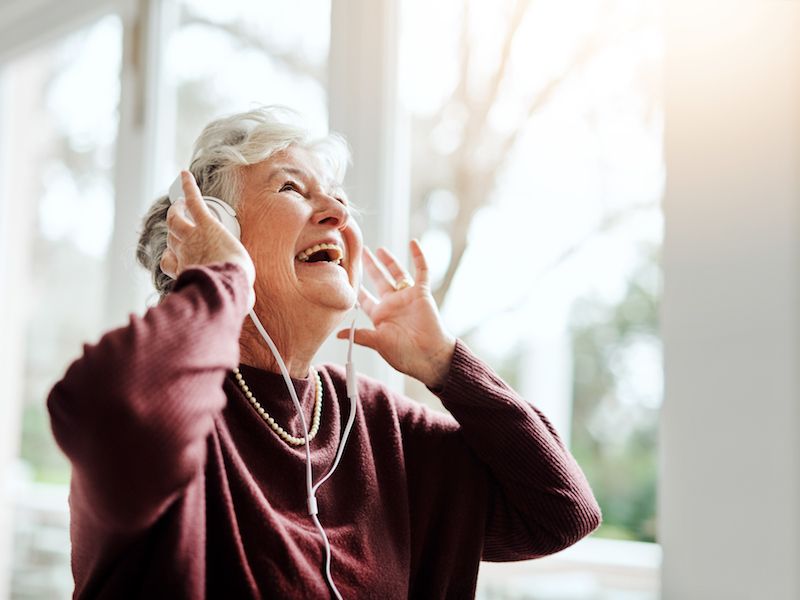
People who work in loud environments such as construction sites or at heavy metal concerts are not the only people impacted by noise related hearing loss. It doesn’t even have to be work-related, leisure-related noise exposure can be dangerous, too. The most common type? Loud sounds heard through headphones, whether it’s music, gaming, streaming video, or even an audiobook with the volume cranked up.
You may not believe your smartphone or tablet can go that loud. The average pain threshold for human hearing is close to 150 db which is in the range of these devices. Your ears will literally start to hurt at this volume. So what’s the solution for protecting your ears against volume related injury.
It’s relevant here to think about the volume. A simple shorthand that’s widely suggested is the 60/60 rule: Listen with the volume at or below 60% for 60 minutes or less in a single session (because how long you listen for matters, too).
Your Hearing Aids Can be Set up For Music
If you use hearing aids, you’re likely streaming your device directly to your hearing aids, so be certain the volume is not too loud or that you’re not trying to drown out other noises with your music. In addition, ask us about how to best listen to music. If you’re a musician or real music aficionado you may have recognized that most hearing aids are programmed to improve the clarity of voices…not necessarily music. While enjoying music, we can probably make a few adjustments to help enhance the quality of sound and reduce the feedback.
Selecting Headphones
When purchasing headphones there are many choices, specifically if you use hearing aids. There are some things to consider, though it’s mostly a matter of personal choice.
Headphones That go Over The Ears
While the foam-covered earpieces that was included with your old Walkman are largely a thing of the past, over-the-ear headphones have made a comeback. They have lots of choices in color and style, are often endorsed by celebrities, and can be unexpectedly pricey. And these headphones cover the whole ear limiting out noise, unlike those old foam ones.
Main-stream perception is that these are safer than in-ear headphones because the source of the sound is further from your eardrum. But the reality is they’re frequently capable of much louder sound than their smaller kin, the speakers are much bigger. Additionally, noise-canceling could possibly help you ignore the crying baby on your flight, but in other circumstances, it can silence sounds you need to hear (such as a honking car). That said, because they cancel out outside noise, you can often lower the volume of what you’re listening to so it’s not so loud that it will injure your ears.
Earbuds
The normal earbuds that come with devices like iPhones are much maligned for their poor sound quality, but because they come along with your phone lots of people still use them. Plus, with newer models that lack a headphone jack, sticking with Apple’s earbuds can just be easier.
Earbuds also don’t block out sound so the downside is, you tend to turn up the sound level. Again, though it’s commonly said that earbuds are a problem because you stick them into your ear so their speakers are really close to your eardrum, volume is really the biggest concern.
Earbuds That Block Outside Noise
More comfortable than standard earbuds, models that have a round rubber tip are the choice of many because they help block outside sound. A seal that stops outside noise from getting in is formed by the rubber tip which molds to the shape of the ear. But these earbuds can also block out noises you might need to hear and loud volume is still the primary problem. And if you have hearing aids, clearly these won’t work for you.
A number of pairs will probably have to be evaluated before you find headphones that work for you. Depending on what you regularly use them for say talking on the phone, as opposed to listening to music, you’ll have unique acoustic expectations. The essential thing is to find headphones that make it comfortable for you to enjoy at a safe and secure volume.
How to Make Certain Your Hearing is Safeguarded
How can you be certain it’s okay? There’s an app for that…If you have a smartphone, you can get the National Institute for Occupational Safety and Health’s free Sound Level Meter app. There are other apps out there, but research has discovered that the accuracy of these other apps is spotty (also, for reasons yet unknown, Android-based apps have proven to be less accurate). That motivated NIOSH to develop their own app. The app lets you measure outside noises, but sounds coming from your device’s speakers can also be measured, this means, the true volume of what’s being sent to your ears. It’s a little bit of work, but taking these kinds of preventative measures can help safeguard your hearing.